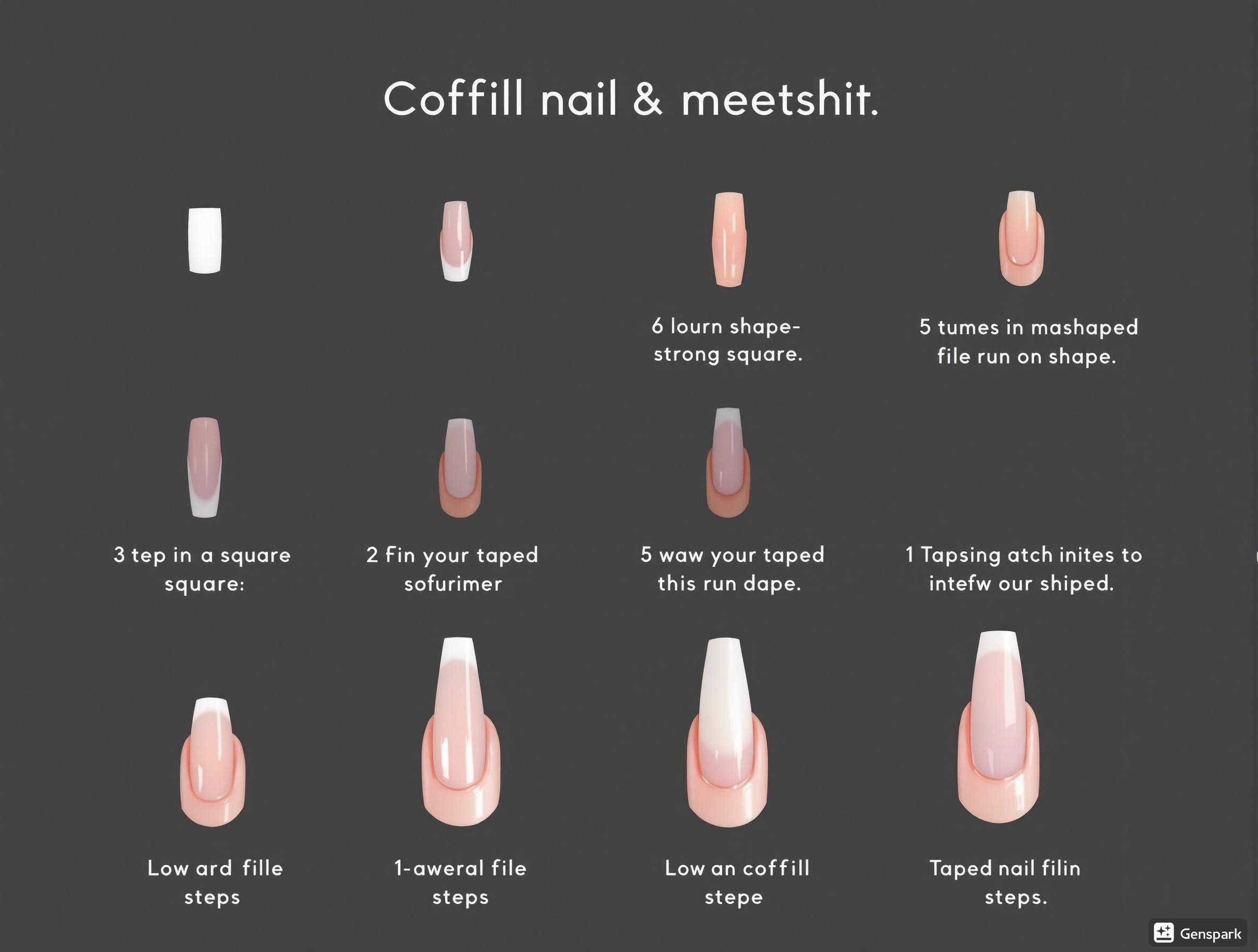Understanding Fundamentals
What Exactly Are Coffin Nails?
Coffin nails (also known as ballerina nails) are characterized by their distinct tapered shape that flares out from the nail bed before coming to a flat, squared-off tip. The name "coffin" comes from the resemblance to the shape of a coffin, while "ballerina" refers to the similarity to a ballerina's pointe shoes.
Unlike round, oval, or almond shapes, coffin nails create a bold and dramatic statement while maintaining a feminine elegance. They offer a substantial canvas for nail art while their flat tip provides stability that pointy shapes like stiletto nails lack.
- Starts narrow at the nail bed
- Tapers outward along the sides
- Ends with a flat, squared-off tip
- Creates the appearance of longer, slenderer fingers

The Evolution of French Tips on Coffin Nails
The French manicure originated in the 1970s, created by Jeff Pink, founder of ORLY. Originally featuring a natural pink or beige base with bright white tips on a shorter, rounded nail, it was designed to be versatile enough to complement any outfit or occasion.
"The French tip has evolved from the traditional round shape to adaptations on every nail shape imaginable. But when paired with the coffin nail, it creates a perfect marriage of classic elegance and modern edge that has captivated the nail industry." —Renowned nail artist Nina Takahashi
The timeline of evolution:
1970s - 1990s
Traditional round French tips dominated—short, subtle, and understated
2000s - 2010s
Square French tips gained popularity with longer extensions
2015 - 2020
Coffin shape emerged as celebrities embraced the edgier look
2020 - 2025
French coffin nails exploded with creative variations and techniques
Why This Combination Works So Well
The coffin French tip creates a perfect balance between classic sophistication and contemporary edge. This combination works exceptionally well for several reasons:
Aesthetic Balance
The angular lines of the coffin shape create visual interest, while the soft curve of the French smile line adds femininity and elegance. This contrast makes the design both striking and sophisticated.
Elongating Effect
The vertical lines of the coffin shape naturally elongate the fingers, while the horizontal line of the French tip creates the illusion of width at the nail bed, resulting in perfectly balanced proportions.
Versatility
The clean lines of both the coffin shape and French tip provide an ideal foundation for additional nail art, embellishments, or can be left minimal for an understated elegance.
Durability
The flat tip of the coffin shape provides more stability than pointed shapes, reducing the risk of breakage, while the French tip design disguises grow-out, extending the life of the manicure.
Ideal Nail Length and Natural Nail Health Requirements
Short Coffin
0.5-1 cm extension past fingertip
Perfect for beginners, active lifestyles, and professional settings. Requires less maintenance and is less prone to breakage.
Medium Coffin
1-1.5 cm extension past fingertip
The most versatile and popular length. Balances style with practicality and works for most hand types.
Long Coffin
1.5+ cm extension past fingertip
Statement length with dramatic effect. Requires strong natural nails or reinforcement with acrylics/hard gel and regular maintenance.
Natural Nail Health Prerequisites
- Strong, non-splitting nails - Nails should be strong enough to support the extension without excessive bending
- Healthy nail beds - Free from infections, severe ridges, or damage
- Well-maintained cuticles - Proper cuticle care ensures better adhesion and a cleaner look
- Appropriate nail thickness - Very thin nails may require additional strengthening treatments before application
Pro Tip
If your natural nails are weak or damaged, consider using a builder gel or a strengthening base coat before attempting coffin French tips. For very active individuals or those new to longer nails, start with a shorter coffin shape and gradually increase the length as you become accustomed to them.
Understanding these fundamental aspects of coffin French tip nails will provide a solid foundation as we progress into the techniques and materials needed to create this sophisticated nail style. In the next section, we'll explore the essential tools and materials required to achieve salon-quality coffin French tips at home.